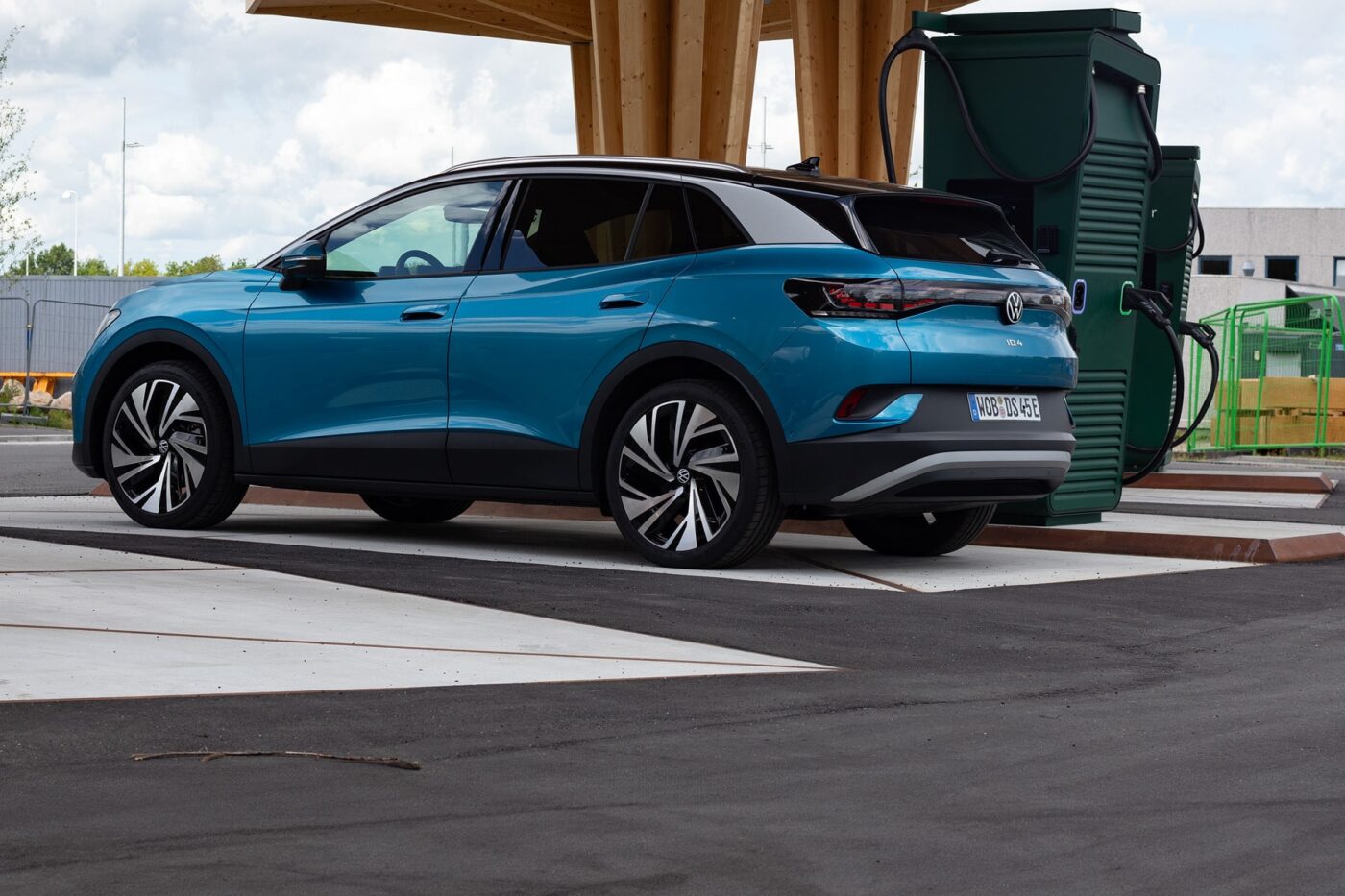
EAFO report finds majority of EU consumers are curious about electric cars
The European Alternative Fuels Observatory (EAFO) published its Consumer Monitor 2023 and analysed the attitudes of European citizens towards EVs in twelve EU countries. On this basis, the authority has compiled twelve country reports and an aggregated analysis for Europe. The participants in the survey, which was conducted in October 2023, came from Belgium, Denmark, France, Germany, Hungary, Italy, Lithuania, Luxembourg, the Netherlands, Slovenia, Spain and Sweden.
The EAFO differentiates between electric car drivers and non-BEV drivers among the people surveyed. A key finding of the aggregated analysis is that Europeans are generally in favour of electric mobility. Although the price of electric cars is a major hurdle, 57 per cent of non-electric car drivers are considering buying an electric car in the future.
Interestingly, the figures vary from country to country. In Belgium, for example, only 22 per cent said that they are looking to get an EV within the next five years. On top of that are ten per cent, who will buy one in five to ten years and another 12 per cent, who want to get an EV, “but without a time frame in mind.” Compare that to France, where 33 per cent of non-BEV drivers surveyed want to get an electric car in the next five years, 8 per cent are looking to get one in five to ten years, and a mere 6 per cent are looking to buy an electric vehicle “without a time frame in mind.”
Still, that means the bottom line is that 44 and 47 per cent of non-BEV drivers surveyed are interested in an electric car medium to long term. In Italy, for example, that bottom line is much higher. There, 65 per cent say that they will buy an electric car in the future. In Spain, it is even 70 per cent.
Based on the completed questionnaires, the EAFO initially created a picture of the typical European BEV driver. These are predominantly men between the ages of 35 and 55 who live in a detached house, have a medium income (2,000 to 3,999 euros) and a high level of education. Conversely, non-BEV drivers tend to be women living in a flat with a secondary school qualification.
Among non-BEV drivers, however, 57 per cent say they would buy an electric car in the short, medium or long term. Eighteen per cent are undecided, and 25 per cent rule it out. If the time horizon for purchasing an electric car is focused on the next five years, 33% of European respondents still say they are considering it. According to the EAFO Monitor, 29 per cent of non-BEV drivers are already “familiar” or “very familiar” with electric cars, while a good third (37%) describe themselves as “interested in BEVs.” The figures for Germany differ slightly. Slightly more people are considering buying a BEV within five years (37%) than the EU average of twelve countries. However, familiarity with EVs (30%) and interest (36%) are as good as the average.
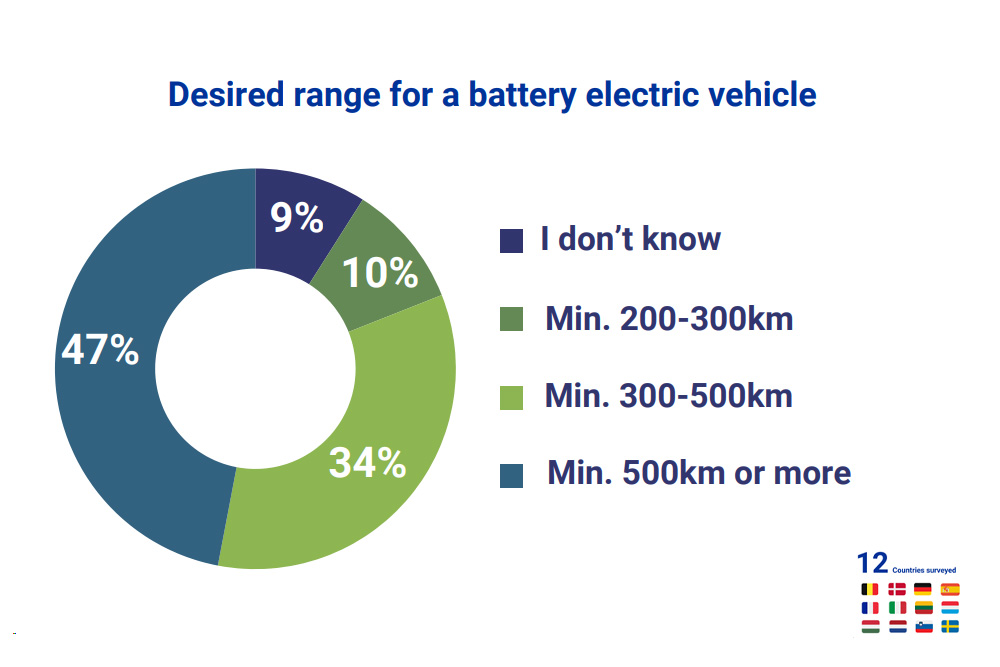
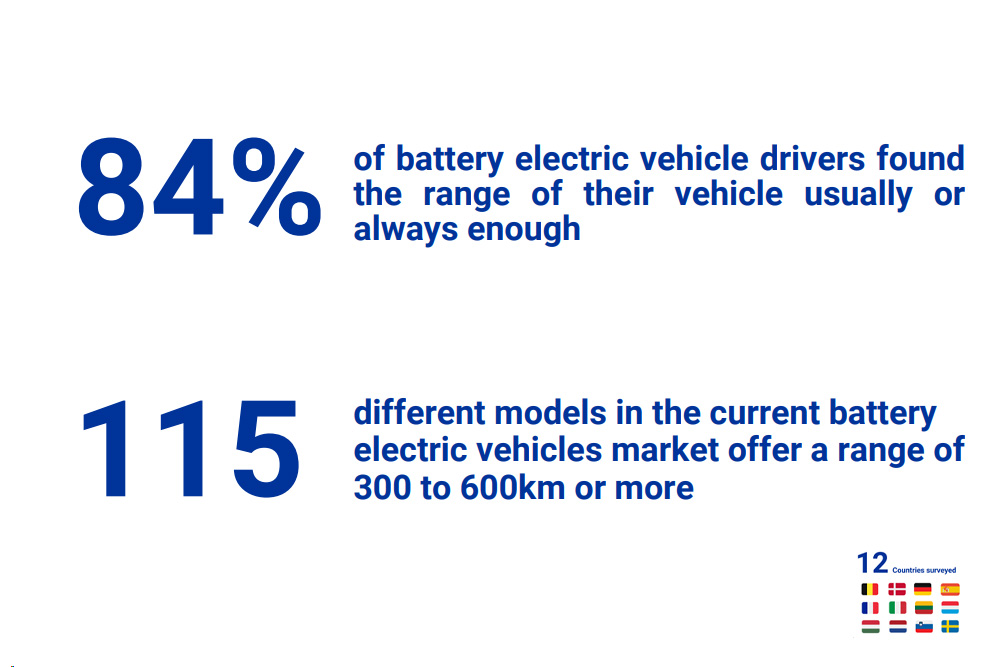
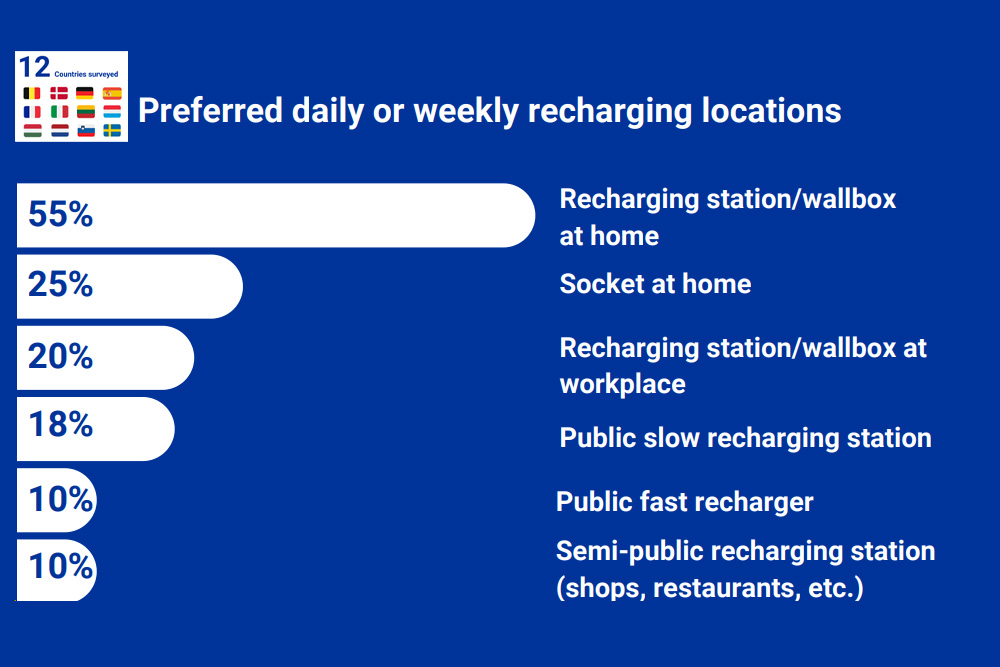
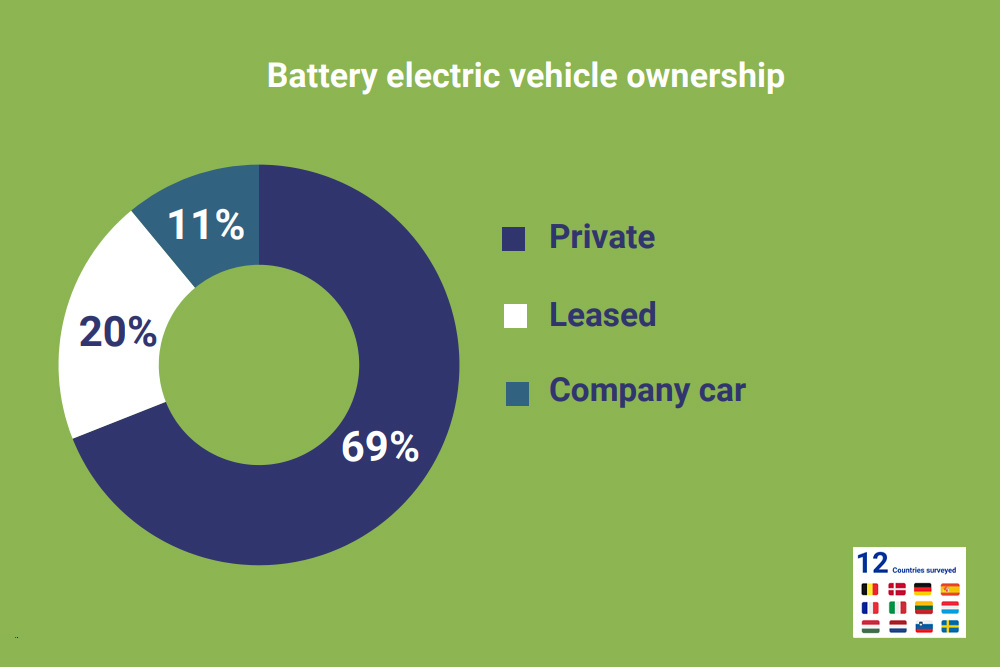
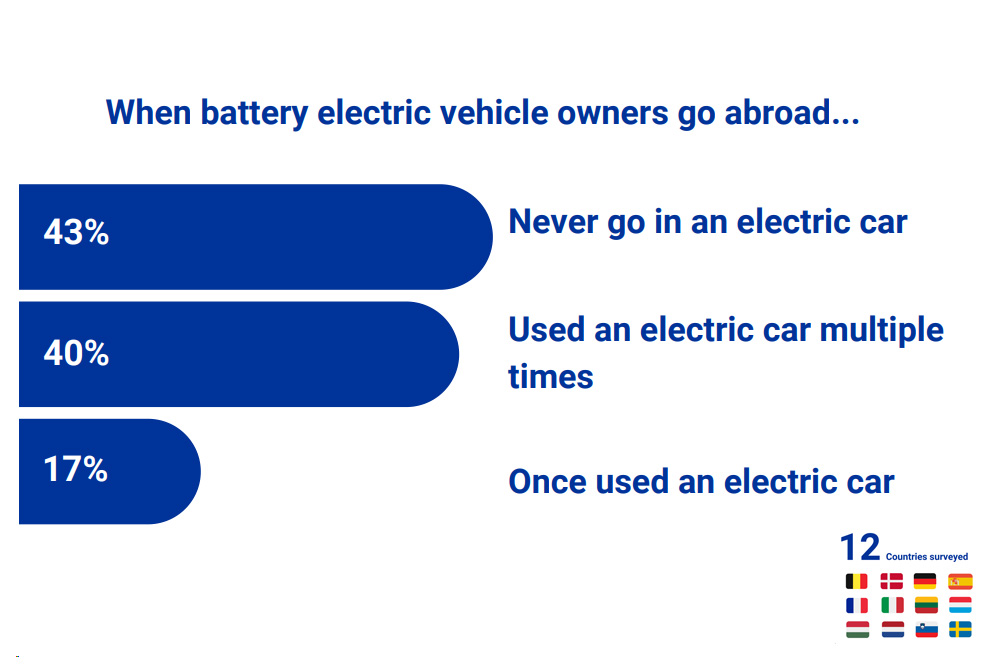
Twenty-nine per cent of German, French, and Dutch respondents rule out an electric car in the future. That is slightly more than the average of the twelve countries surveyed. In Belgium and Luxembourg, it is even 35 per cent. In Italy, on the other hand, only 19 per cent of non-BEV drivers surveyed rule out owning an electric car.
The most important advantage of electric cars from the respondents’ point of view is that they are considered better for the climate; the biggest disadvantage is the purchase costs. The EAFO report calculated the median price that European drivers are prepared to pay for a BEV (used or new) at €20,000. That is still more than they are willing to spend on a combustion engine (15,000 euros).
In Germany, consumers are even willing to pay 25,000 euros (median value). In Hungary, people are willing to spend a maximum of 5,000 euros on a new or used ICE and up to 10,000 euros on a new or used BEV model.
In terms of range, the European respondents would like more than 500 km (47%) or 300 to 500 km (34%). Notably, among those with an electric car, 84 per cent stated that their range is usually or always sufficient. Specifically, 6 per cent of European BEV drivers stated a range of up to 200 kilometres, 41 per cent between 201 and 400 kilometres and 53 per cent more than 401 kilometres. In Germany, as many as 93 per cent of BEV drivers are satisfied with their range.
Meanwhile, the most frequently used place for recharging is a charging station at home (55 per cent of respondents on a daily basis or several times a week). If you add charging at a household socket, this figure rises to 80 per cent. Public normal or fast charging stations (18% and 10%, respectively) are used less frequently on a daily basis or several times a week.
In Germany, the proportion of home chargers is lower (47%), probably also because more people in this country rent apartments compared to other EU countries. On the other hand, charging at work is more popular (27 per cent) than the national average (20 per cent). The same is true for Belgium, for example.
However, in Denmark, it is the other way around. 78 per cent charge at home using a wall box charging station and another 35 per cent plug their EV into a socket at home. 38 per cent charge at their workplace. In Italy, too, 54 per cent of those surveyed noted that they use a wall box charging station at home and 25 per cent use a household socket.
Almost a third of European BEV drivers have never had to wait at public charging stations (“if occupied, drive on”). And when travelling abroad, 60% of respondents rated their charging experience as “easy” or “very easy.”
The EAFO has collected further interesting information on electric car drivers. For example, 96 per cent of European BEV drivers use their vehicle daily or several times a week. Their electric car is mostly new (74%) and privately owned (69%). One in five leases (20%), and one in ten is a company car (11%).
Just under half of electric car drivers (44%) know what vehicle-to-grid (V2G) is, and a good two-thirds (68%) are interested in buying a V2G-capable vehicle. In Germany, the proportion of new cars (86%) is significantly higher than the calculated EU average, but the proportion of private ownership is lower (61%). Leasing (27%) and company cars (12%) play a greater role.
Most respondents consider a purchase bonus to be the most effective incentive for increasing electric car sales. At the same time, they fear that too few private and public AC charging options could be available. To a lesser extent, the survey participants also stated that too few public fast-charging stations could pose a problem.
With its Consumer Monitor, published for the second year in a row, the EAFO aims to better understand consumers’ attitudes towards battery electric cars, their electric mobility and charging behaviour and the challenges people perceive in this context. According to the analysts, political decision-makers and other stakeholders can use the results to derive trends, needs, and opportunities to drive the transition.
In terms of methodology, the authority conducted an online survey within a closed panel to ensure the representativeness of the general population, including non-BEV and BEV drivers. To improve the analysis among BEV drivers, an identical online survey was initiated via EAFO’s partner AVERE and other external participants. The total number of valid responses totalled 19,080, of which 17,034 were completed by non-BEV drivers and 2,046 by BEV drivers.
alternative-fuels-observatory.ec.europa.eu (Report, Europe), alternative-fuels-observatory.ec.europa.eu (Factsheet, Europe) alternative-fuels-observatory.ec.europa.eu (all 12 country reports and factsheets)

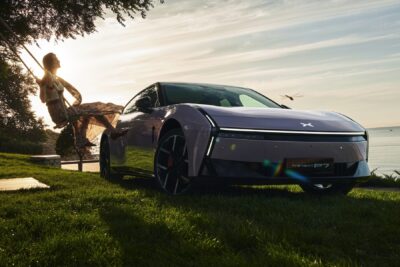
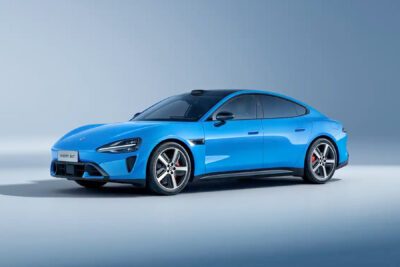
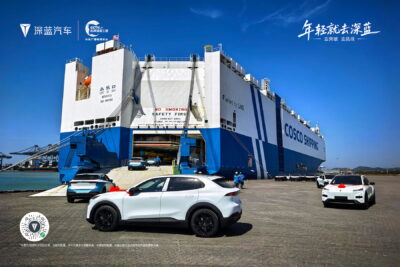
1 Comment